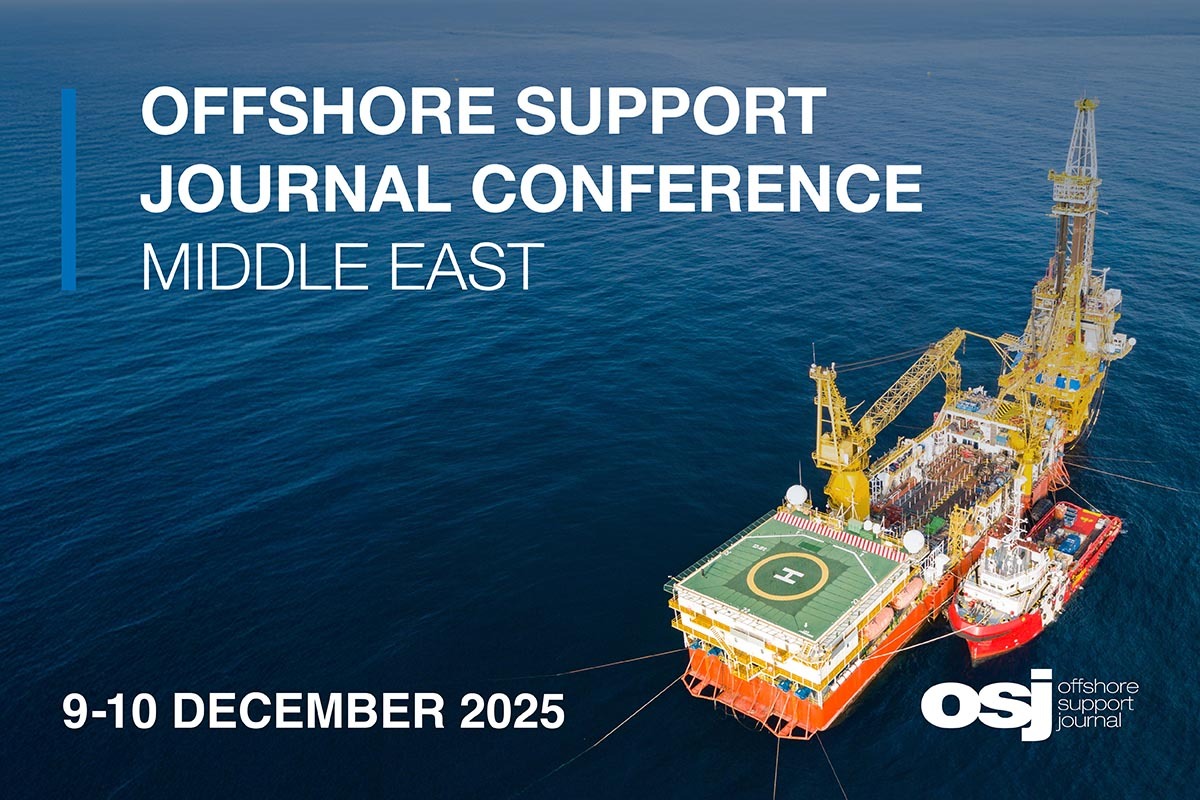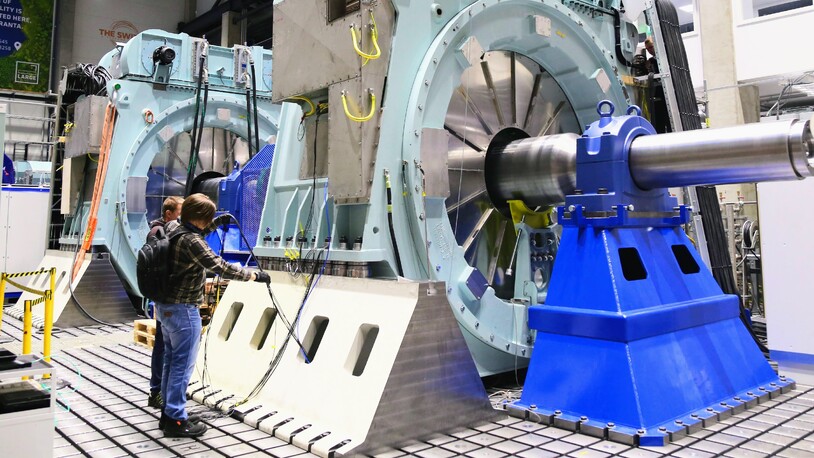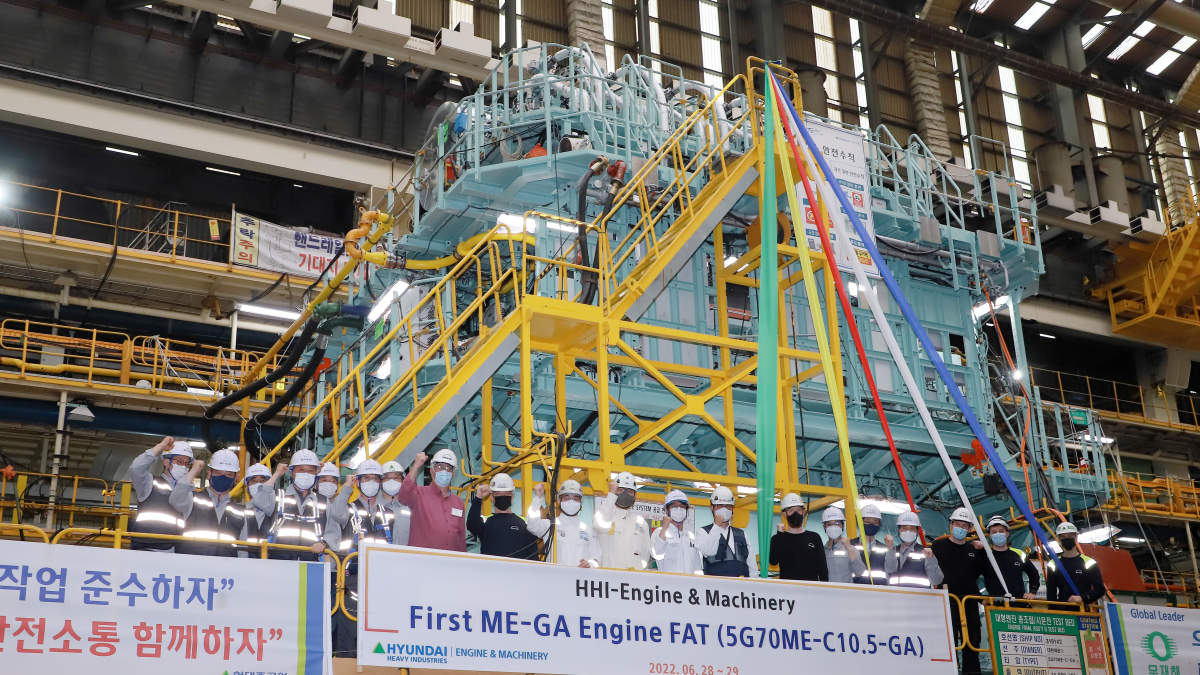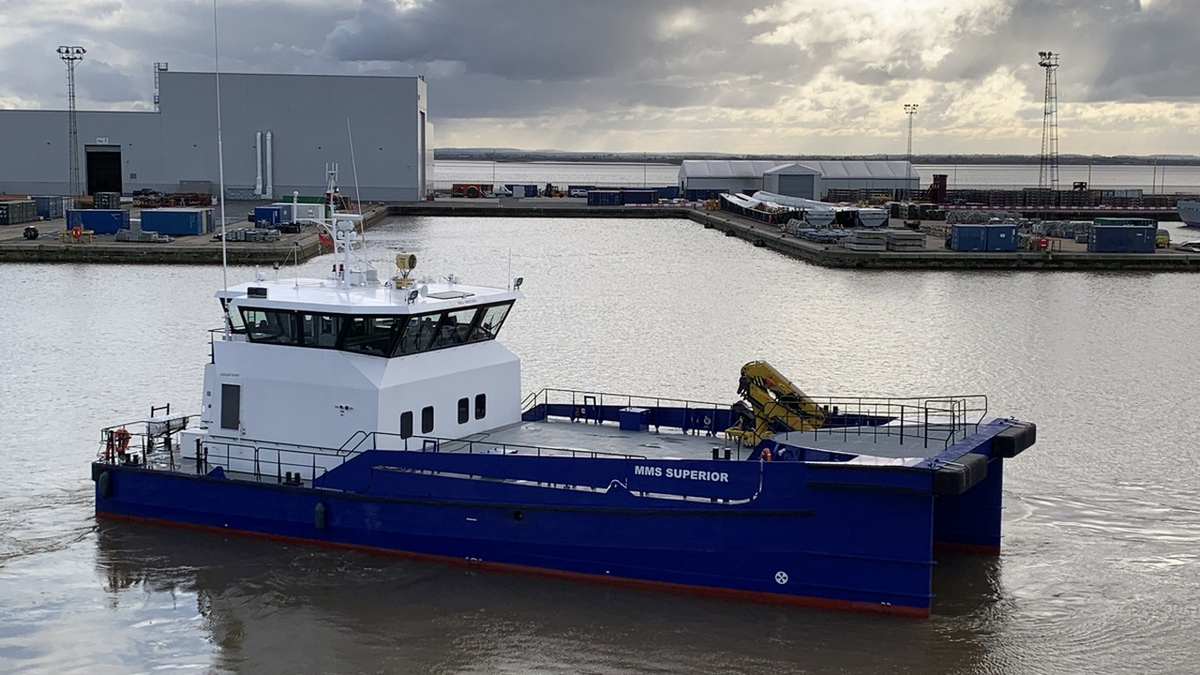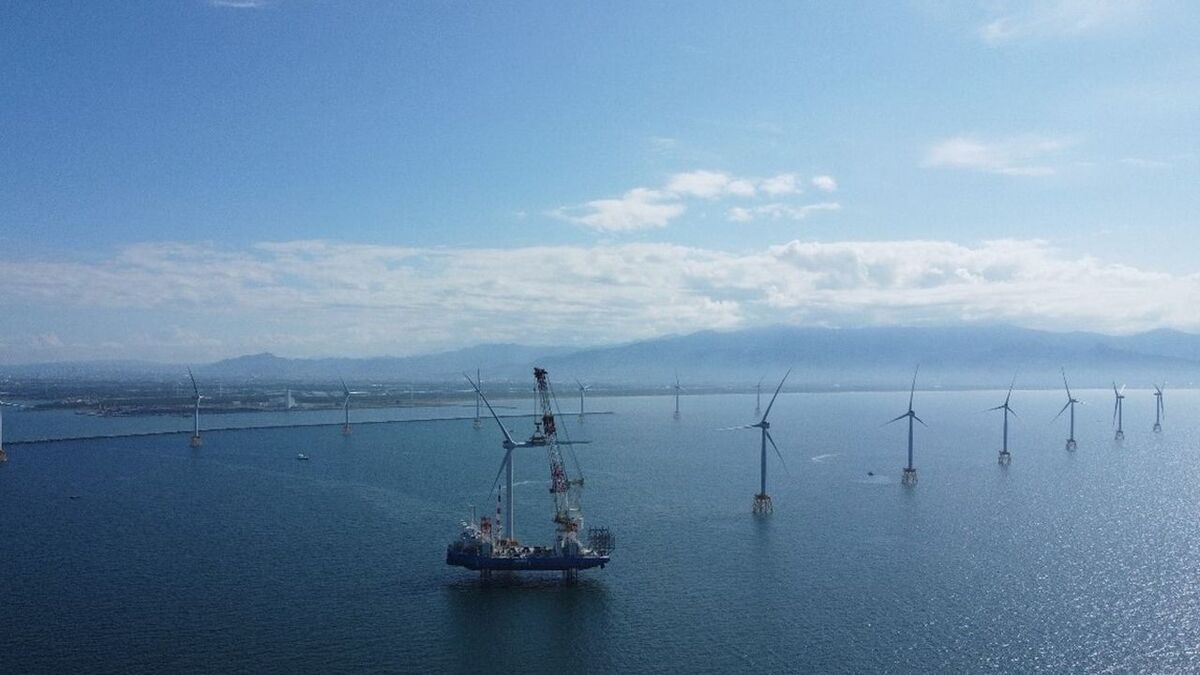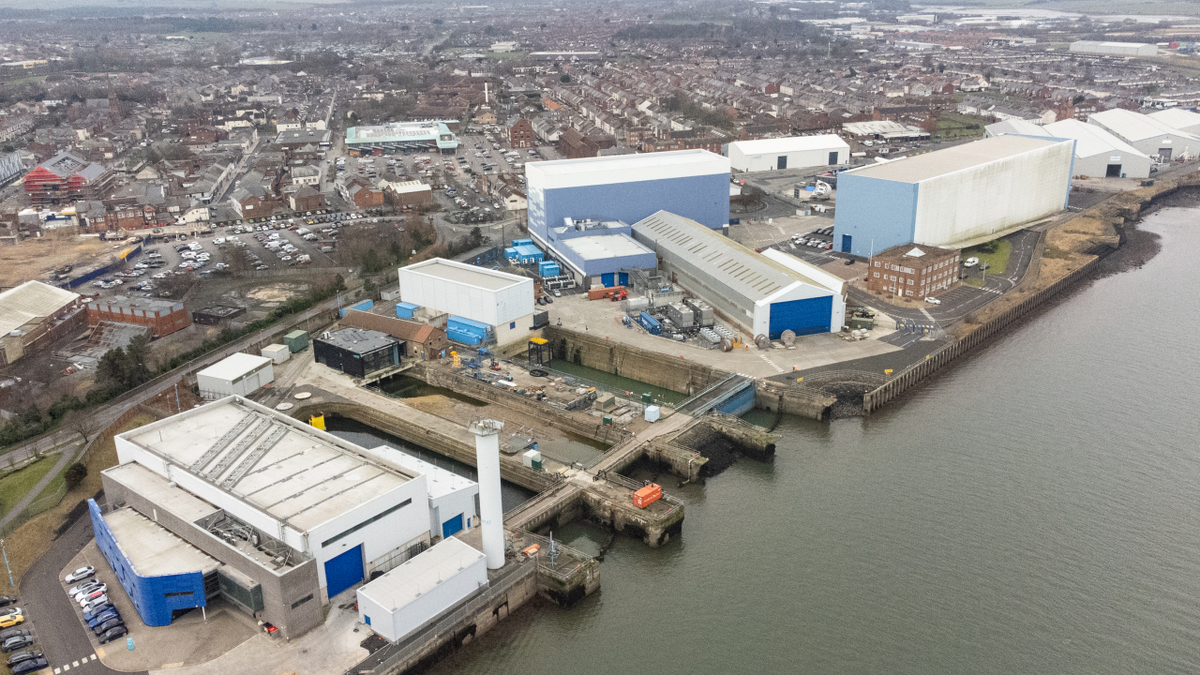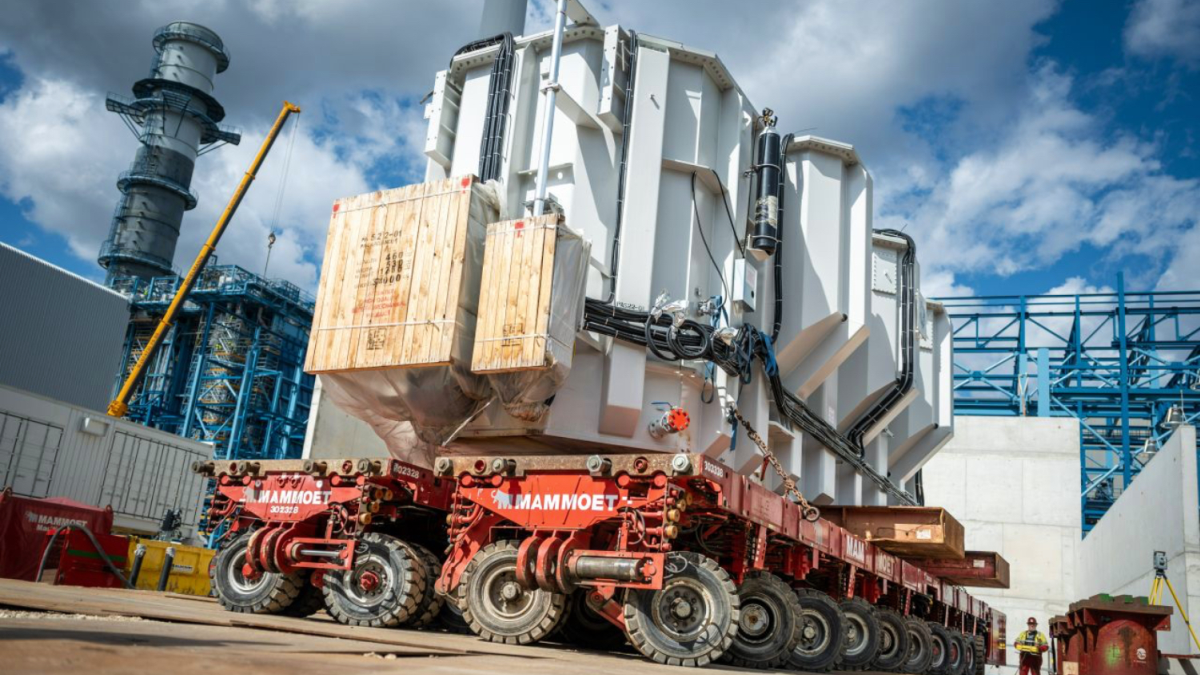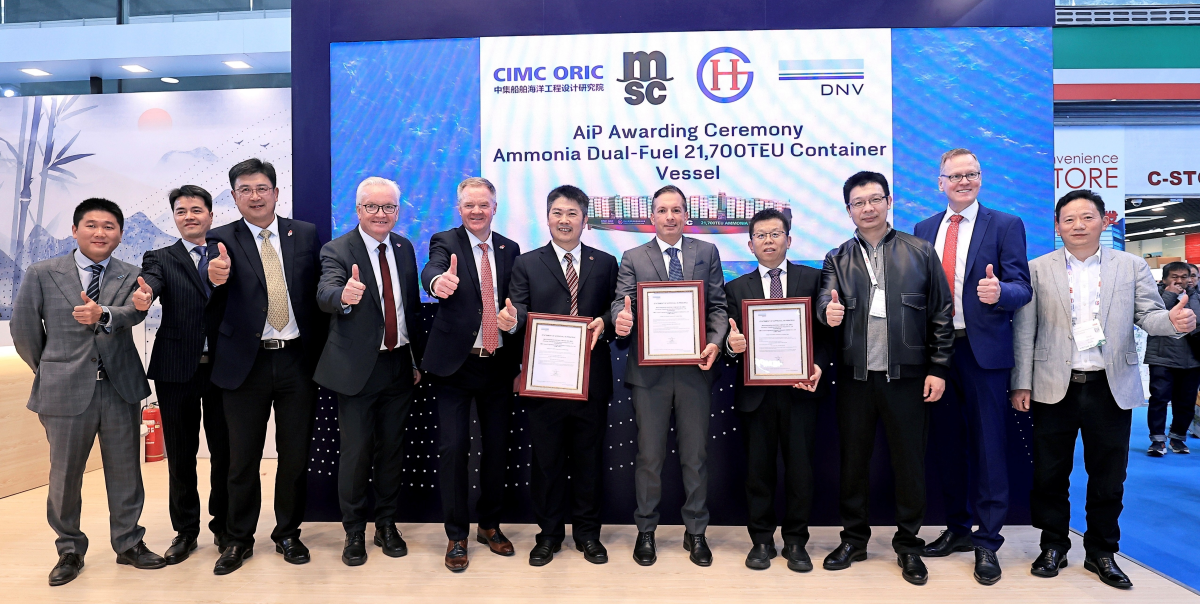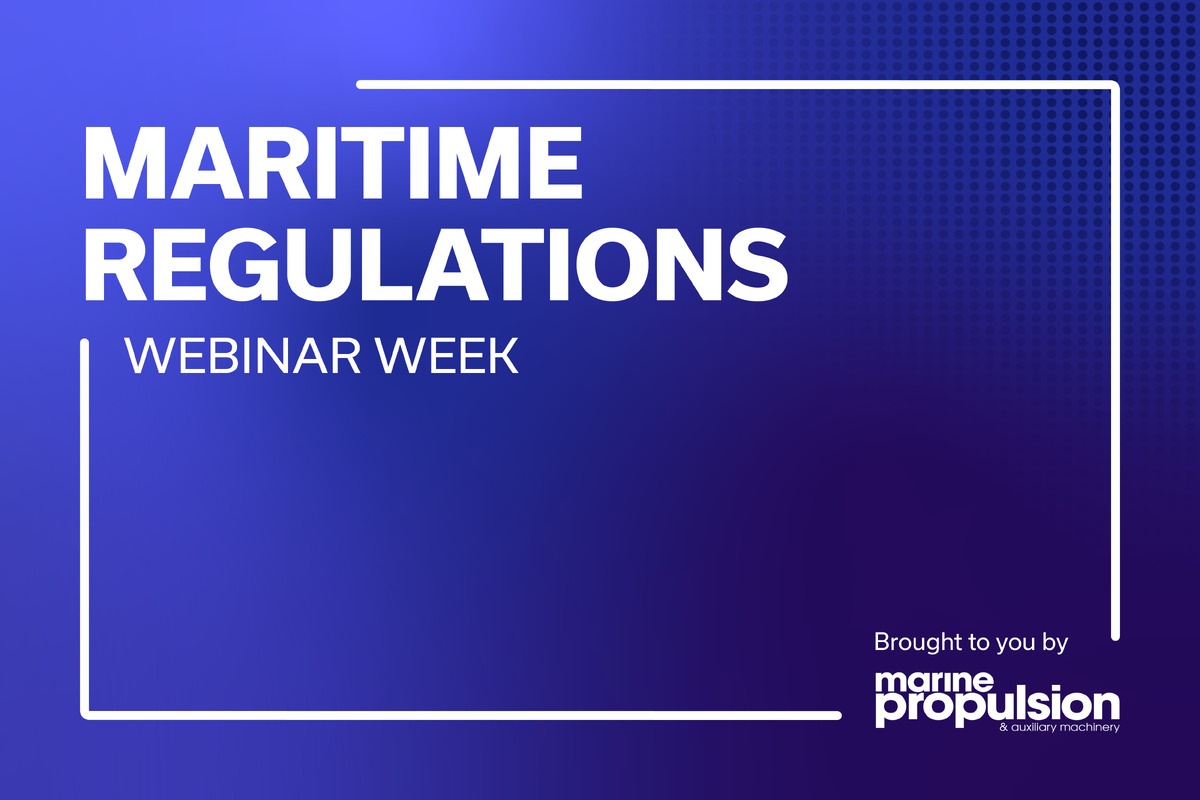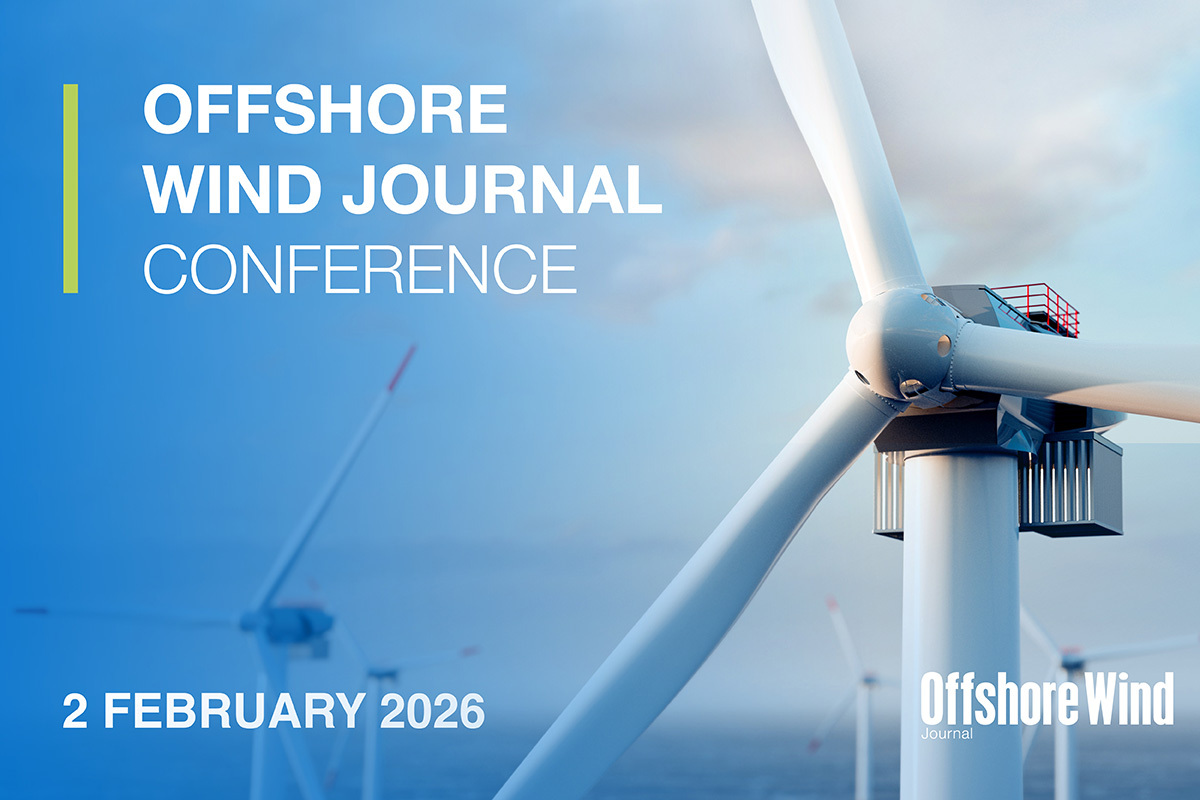Business Sectors
Events
Offshore Support Journal Conference, Middle East 2025
Contents
Low-pressure, dual-fuel engines set to dominate LNG shipping
More fuel efficient and environmentally friendly new-generation two-stroke, Otto-cycle, dual-fuel engines from WinGD and MAN Energy Solutions will be popular choices in future LNG shipping fleet
Factory acceptances tests (FATs) were completed in South Korea in June and July for two of the most important next-generation two-stroke, dual-fuel engine platforms for LNG carrier newbuilds.
Leading enginebuilder Hyundai Heavy Industries, Engine & Machinery Division (HHI-EMD) conducted the two separate FATS for the rival two-stroke, low-pressure, Otto-cycle, DF engines: WinGD’s X-DF2.1 engine with “iCER on engine” application; and MAN Energy Solutions’ first ME-GA. Both engines, destined for 174,000-m3 LNG newbuildings for different owners, are set to be dominant prime movers in the future global LNG shipping fleet.
This was highlighted by the International Gas Union (IGU) in its IGU World LNG Report 2022, released in April this year. IGU noted that the emergence of more efficient containment systems with lower boil-off gas (BOG) rates in combination with short-term and spot trading of LNG “have spawned demand for more flexible and efficient propulsion systems to adapt to varied sailing speeds and conditions.” IGU said as a result of these factors, “a new wave of dual-fuel propulsion systems that also burn boil-off gas with a small amount of pilot fuel or diesel” have been introduced into the market. These slow-speed, dual-fuel engines include MAN Energy Solutions’ high-pressure, Diesel-cycle MAN B&W ME-GI engine and its low-pressure, Otto-cycle ME-GA, and two generations of low-pressure injection Winterthur Gas & Diesel (WinGD) X-DF units.
“Steam-turbine vessels could well be squeezed out of the market by IMO’s environmental regulations”
While they still make up about 35% of the global LNG fleet, steam-turbine vessels could well be squeezed out of the market by IMO’s environmental regulations, Energy Efficiency Index for Existing Ships (EEXI) and Carbon Intensity Indicator (CII), which come into force in January 2023, and ships fitted with new-generation, dual-fuel propulsion systems, DFDE/TFDE and ME-GI/ ME-GA/X-DF engines. These engines are approximately 25% and 50% more efficient compared to steam, respectively.
There are about 225 LNG carriers fitted with steam turbine propulsion, almost all of which are at least 10 years old. Every vessel over 20 years old is fitted with steam turbines.
A newer propulsion technology that combines steam turbine with gas engines (STaGE) debuted in 2018.
The Sayaringo STaGE propulsion system recovers waste heat from running the dual-fuel engine to heat feedwater and generate steam for the steam turbine, significantly improving overall efficiency. The electric generators attached to the dual-fuel engine power both a propulsion system and the ship, eliminating the need for an additional turbine generator. In addition to efficiency, the combination of two propulsion systems improves the ship’s adaptability while reducing overall emissions. A Japanese innovation, STaGE systems have been produced exclusively by Mitsubishi, with eight newbuilds delivered during 2018 and 2019. However, there are currently no STaGE vessels on order, reports the IGU.
First X-DF 2.0 engines
WinGD reported the successful FATs for the first two X-DF2.0 dual-fuel engines to feature intelligent control by exhaust recycling (iCER). iCER has been a critical technology in improving the fuel consumption and methane slip of the X-DF engine platform, building on operational experience since they were introduced to the market seven years ago.
The engines will be delivered to the shipyard in May 2024.
In May, Swiss marine engine designer WinGD noted its on-engine iCER technology can be installed without increasing the engine’s footprint. The technology was the result of a joint co-operation between WinGD and HHI-EMD.
“The on-engine iCER offers the same advantages while simplifying testing, building and installation of the engine, as well as reducing the engineroom space needed for emissions reduction equipment,” WinGD said in a press statement. It added: “The exhaust gas cooler and all exhaust gas flow control components are installed on the engine, offering significant engineroom design flexibility."
The iCER units can lower emissions by cooling and recirculating the unburnt gases in engine exhausts back to the engine for combustion, improving the overall internal combustion rate.
The on-engine iCER is initially available on WinGD’s X72DF engines, one of the most popular DF engines in the global LNG carrier fleet.
“A new wave of dual-fuel propulsion systems that burn boil-off gas with a small amount of pilot fuel or diesel have been introduced”
“Minimising methane slip on LNG carriers has an added benefit for operators using their cargo as fuel, allowing them to maximise the value of the LNG delivered. The technology will be rolled out to other models in the X-DF engine range,” WinGD said.
"As well as reducing methane slip and total greenhouse gas emissions, both on- and off-engine iCER [units] enable compliance with IMO’s Tier III NOx limits, whether using LNG or diesel fuels."
WinGD’s low-pressure injection and pre-chamber design minimise pilot fuel requirements, helping to achieve low NOx emissions while maintaining low overall fuel consumption. X-DF meets Tier III NOx emissions limits in gas mode without aftertreatment, which has been demonstrated in more than 300 in-service engines recording almost 2M operating hours and almost 500 X-DF engines on order.
Targeting even more refined combustion control and optimised performance, in 2020 WinGD introduced the X-DF2.0 upgrade with iCER technology. This enables improved fuel consumption of around 8% in gas mode and 6% in diesel mode, as well as satisfying Tier III NOx emissions limits in both modes. It also reduces methane slip by up to 50%, giving it the lowest emissions of any similar combustion concept available. This performance improvement has been confirmed in recent FATs for iCER with enginebuilders CMD in China and IHI Power Systems in Japan.
WinGD vice president R&D Dominik Schneiter, says: “iCER optimises fuel efficiency and emissions without compromising the reliability and low capex that has made X-DF so popular over the past seven years.”
For gas carriers, iCER can provide further flexibility through fuel-sharing mode, which allows operators to use available boil-off LNG supplemented with diesel or VLSFO to reach desired ship speeds.
As of April, IGU reported 84 vessels with the X-DF propulsion systems were in service. The orderbook for LNG carriers contains 138 X-DF vessels across both generations, representing 64% of total newbuilds to be delivered.

First ME-GA
MAN Energy Solutions’ ME-GA engine builds on its experience with the two-stroke, high-pressure Diesel-cycle dual-fuel engine ME-GI platform. Introduced in 2015 by MAN Energy Solutions, the ME-GI pressurises BOG up to around 350 bar and burns it with a small amount of injected pilot fuel. Efficiency is maximised as the slow-speed engine is able to run off a high proportion of BOG while minimising the risk of knocking. Similar efficiency and reliability levels are observed when switching between fuel sources.
Fuel efficiency is maximised for large-sized LNG carriers, which make up the majority of newbuilds on order at shipyards in South Korea and China. As such, the current modern LNG fleet in service reflects the apparent advantages of the ME-GI propulsion system. A total of 70 vessels fitted with ME-GI systems have been delivered since 2015, with 16 additional newbuilds with the system under construction.
MAN Energy Solutions’ ME-GA is specifically designed for the LNG carrier segment. This system allows for a low gas supply pressure, better suited for the use of BOG as a fuel. The ME-GA is also touted to have lower capex, opex and NOx emissions than current-generation engines. Exhaust gas recirculation (EGR) enables the ME-GA to reduce specific gas consumption by about 3%, and specific fuel-oil consumption by 5%. Additionally, it reduces methane slip by 50%, and improves the stability of the Otto-cycle combustion process. With EGR, the ME-GA meets Tier III requirements in both fuel oil and gas modes, without additional aftertreatment.
“WinGD’s X-DF systems will make up a significant portion of the delivered vessels until 2025”
The MAN Energy Solutions’ Diesel-cycle, two-stroke dual-fuel ME-GI engine, first introduced on the water seven years ago, has a negligible methane slip as the rich gas-air mixture provides a clean, complete combustion. LNG is injected directly into the combustion chamber just after a liquid fuel pilot jet has initiated combustion. This minimises unburnt residues and allows MAN to quantify and guarantee methane slip levels in a range from 0.2 – 0.3 g/kWh over the ME-GI engines’ load range.
According to the IGU, as of April, there are 41 ME-GA-propelled LNG carriers on order, 36 of which will be delivered in 2025 and five in 2026.
The first MAN B&W ME-GA engine manufactured by HHI-EMD will be installed in August for a 174,000-m3 LNG newbuild under construction at Hyundai Heavy Industries.
IGU points out that the global orderbook shows that moving forward, both generations of WinGD’s X-DF systems “will make up a significant portion of the delivered vessels until 2025, when they will compete with ME-GA systems, as the first newbuilds equipped with that propulsion system are delivered.”
Related to this Story
Events
Offshore Support Journal Conference, Middle East 2025
Maritime Regulations Webinar Week
Maritime Decarbonization Conference, Americas 2026
Offshore Wind Journal Conference 2026
© 2024 Riviera Maritime Media Ltd.
